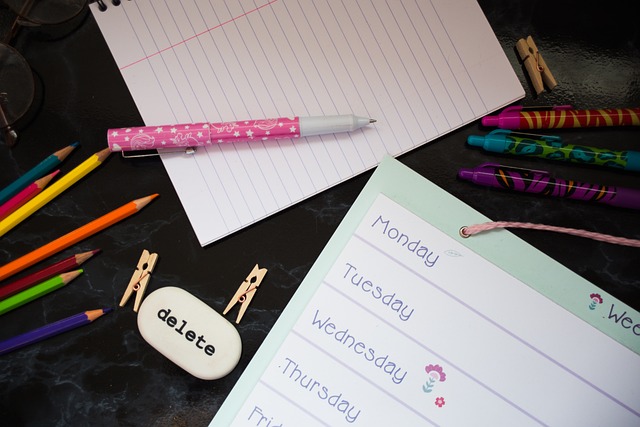DIY Travel Planner: Personalized Itineraries for the Modern Explorer
In recent years, travel has undergone a significant transformation, evolving from a luxury pastime into a cherished lifestyle for many. The modern explorer values authenticity, flexibility, and deeply personal experiences. A DIY travel planner serves as an invaluable tool for these adventurers, allowing them to craft personalized itineraries that cater to their unique preferences and aspirations. This article explores the depths of a DIY travel planner, focusing on its benefits, components, and strategies for creating the ideal travel itinerary.
The Evolution of Travel Planning
Historically, travelers would rely on travel agents who dictated standardized itineraries, focusing on popular destinations and attractions. While this method was efficient for some, it often left little room for individual expression or the exploration of off-the-beaten-path locales. With advancements in technology, the rise of online platforms and travel blogs has empowered explorers to take charge of their journeys.
Today, the digital landscape offers a plethora of resources where travelers can gather inspiration and local insights. Social media platforms, travel forums, and dedicated travel websites allow users to share their experiences and recommendations, fueling an ever-growing desire for personalized adventures.
The Appeal of Personalized Itineraries
The modern explorer craves personalization in travel not merely to enjoy new vistas but to immerse themselves in new cultures, experience unique traditions, and create lasting memories. A personalized itinerary caters to an individual’s travel style, interests, and needs, ensuring that every moment is cherished.
By designing their own travel plans, explorers can:
- Design Flexible Schedules: DIY itineraries allow travelers to alter plans based on their mood, energy levels, or unexpected opportunities.
- Explore Hidden Gems: Tailored travel plans enable explorers to venture beyond conventional tourist traps, discovering charming local spots and experiences.
- Align with Personal Interests: Whether it’s food, photography, adventure sports, or cultural history, a DIY planner can cater specifically to personal passions.
- Optimize Budget: Planning independently allows travelers to select accommodations and activities according to their budget without any hidden fees that travel agencies might impose.
Components of a DIY Travel Planner
Creating an effective DIY travel planner involves careful consideration of various components. Each segment plays a pivotal role in ensuring a comprehensive, personalized itinerary that enhances the overall travel experience.
Destination Research
Before setting foot in an unfamiliar territory, delving deep into destination research is crucial. Travelers should consider weather conditions, local customs, holiday schedules, and even regional safety. Understanding these aspects can significantly enhance the travel experience and help avoid cultural faux pas.
Time Allocation
Determining how much time to spend in each destination is critical. Factors like distance, the number of attractions, and personal interest levels should come into play. It’s vital to strike a balance between exploring and allowing downtime, preventing potential burnout.
Accommodation Choices
Accommodations can range from budget hostels to luxurious hotels and cozy Airbnb rentals. Depending on preferences, travelers can either opt for a central location for convenience or choose quieter areas for a peaceful retreat. Reading reviews and assessing amenities can help make educated decisions.
Transportation Planning
Understanding transportation options is essential, especially in countries with limited public transport. Exploring local options—ranging from bike rentals to ride-sharing services can streamline the travel experience. Consideration of logistics, such as travel times and necessary connections, can ensure smooth transitions between destinations.
Activity Selection
A personalized itinerary should feature a variety of activities tailored to the traveler’s interests. Exploring local cuisine, art galleries, historical sites, or adventurous excursions can enrich the overall experience. It’s also prudent to incorporate some spontaneity; leaving room in the itinerary for unexpected activities can lead to unforgettable memories.
Budget Management
Budgeting is a crucial aspect of travel planning. A DIY travel planner helps establish a clear understanding of expenses, distinguishing between fixed costs (accommodations, flights) and variable costs (meals, attractions). Creating a contingency plan for unforeseen expenses can alleviate stress while on the road.
Strategies for Creating a DIY Travel Itinerary
Now that we understand the components of a DIY travel planner, the next step involves strategizing how to compile these elements seamlessly into a cohesive itinerary. The process can be broken down into several key methodologies to ensure an organized and enjoyable travel experience.
Begin with Inspiration
Start by gathering inspiration from various sources—travel blogs, social media, and even conversations with fellow travelers. Compiling a list of must-visit destinations will serve as the foundation for your travel itinerary. Consider themes or specific interests to narrow down possible locations.
Create a Visual Map
Mapping out destinations visually can help travelers foresee their journey better. Use digital mapping tools to plot desired stops, determining the best sequences to optimize travel time. This visual representation aids in identifying potential overlaps and logistical challenges.
Prioritize Must-See Spots
Once a broader outline is complete, highlight a few ‘must-see’ attractions that define the experience. Choose attractions based on personal interest and include local recommendations to add authenticity. This prioritization allows for flexibility, especially if time is constrained.
Balance Structured Plans with Flexibility
While having a structure is essential, maintaining flexibility within the itinerary is equally crucial. Set aside time each day for leisure pursuits or unplanned adventures. This approach encourages spontaneity and deeper immersion into local culture, providing opportunities to connect with locals, experiment with food, or simply relax in a serene setting.
Stay Organized
Keeping everything organized is essential for a seamless travel experience. Utilize digital tools, such as spreadsheets or dedicated travel apps, to keep tabs on reservations, activities, and vital information. Having all necessary details at your fingertips allows for better navigation throughout your journey.
Factor in Local Insights
Engaging with locals adds a unique flavor to any trip. Seek recommendations from residents on hidden gems—like eateries, parks, or activities—which may not appear in mainstream travel guides. Whether through friendly conversations or online forums, local insights can enhance your adventure, providing experiences not typically found in a guidebook.
Final Thoughts: The Joy of DIY Travel Planning
Embarking on a journey, guided by a DIY travel planner, allows modern explorers to curate unforgettable experiences. As travel continues to evolve, the desire for personalized itineraries grows stronger, steeped in authenticity and flexibility.
Through in-depth destination research, careful planning of components, and a personalized approach that balances structure and spontaneity, travelers can craft unique journeys that resonate with their individual spirits. The open road and the allure of discovery await—embrace the adventure and get started on your tailored travel itinerary!


